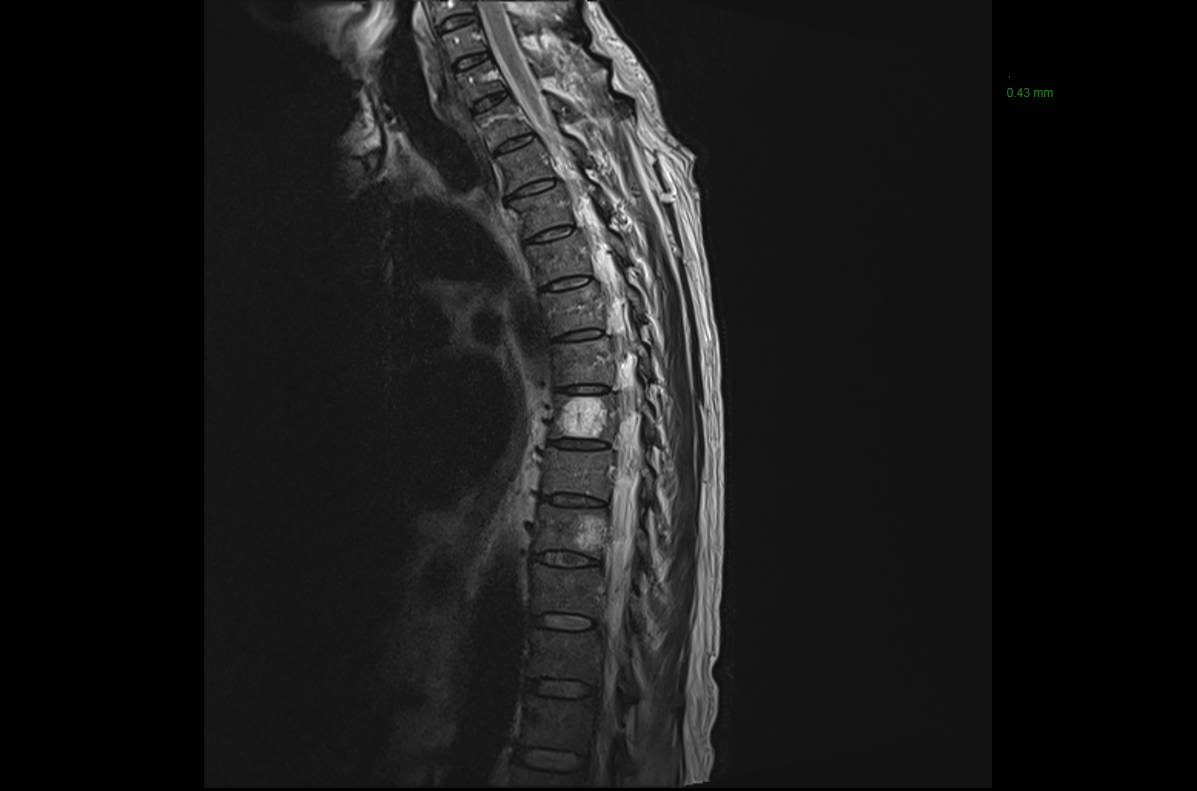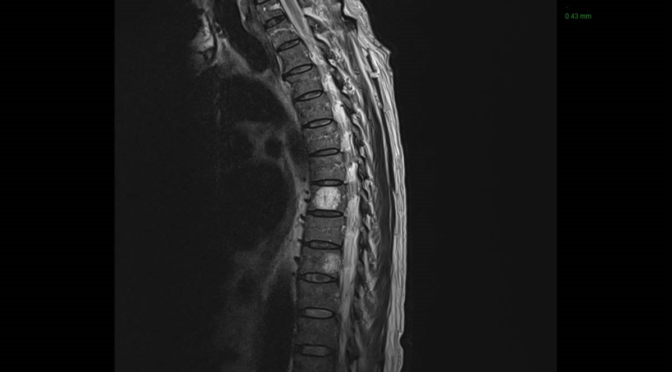I have a Non-Hodgkin´s lymphoma: a challenge for a correct clinical reasoning process
The three desirable steps in clinical practice
The best scenario in medical diagnosis follows three steps, the first one is the clinical reasoning, the second one to ask for a blood test or an image, and the third and final , to obtain a histological sample.
We will expose a clinical case of a patient diagnosed with a Non-Hodgkin´s lymphoma.
Clinical case
First step
A 50-year-old man had an abdominal recurrence of a Non-Hodgkin´s lymphoma. He referred an urinary incontinence and a prolonged constipation. The physical examination showed a normal lung and cardiac murmurs. The peristaltic abdominal sounds were clearly reduced. Both legs were swollen, and with less strength than normal. The neurological examination revealed less sensitivity on the inner side of both thighs.
What is your differential?
Second step
The patient was so weak that it was very difficult to evaluate his ability to walk. He could move his legs in bed, but with a lack of strength. Thinking on the possibility of a spinal cord compression or a Central Nervous System (CNS) infiltration, we asked for a Magnetic Nuclear Resonance (MNR).

There was an abnormal deposit of contrast in the lumbar nerves, suggestive of a nerve infiltration. The vertebral spots in the vertebra were compatible with hemangioma. No spinal cord compression.
Third step
The next question would be: Can we obtain a sample to confirm the clinical orientation from the clinic and the image ? We decide to do a lumbar puncture to obtain a sample of cerebrospinal fluid. The analysis showed the presence of malignant cells from a Non-Hodgkin´s lymphoma.
Comments
The Non-Hodgkin´s lymphomas are an extensive family of diseases with different clinical pictures. The new molecular studies are helping to detect new clinical entities with different clinical behaviour and even a tailored treatment. In this case that we present here , the histological diagnosis was a “double-hit lymphoma” (1). Double-hit lymphoma (DHL) is one of the most aggressive molecular subtypes of diffuse large B-cell lymphomas with gene rearrangements involving MYC, and BCL2 and/or BCL6.
Clinical reasoning exercise 
If you are not a specialist in the diagnosis and the treatment of the Non-Hodgkin´s lymphomas, even if you are a medical oncologist, you can miss important data in an efficient and a correct clinical reasoning process. A doctor, whatever his or her specialty, knows about the Non-Hodgkin´s lymphomas, but, nowadays, this name includes different clinical entities with a quiet different clinical behaviour. The double-hit lymphoma was defined just five years ago, and we know about its aggressiveness, the tendency for an abdominal progression and the high probability of CNS infiltration.
There are several implications for a correct clinical reasoning process in this situation:
- If you are not familiar with a particular new clinical entity, try to learn the specific details of the subject. In this case the knowledge of the characteristics of this particular lymphoma could have been very helpful to decide during the clinical evaluation.
- When a specialist decides a treatment and the doctor attending to the patient is more generalist, a good communication about the details of the disease is mandatory.
Author: Lorenzo Alonso
FORO OSLER
Bibliography
- Taha Al-Juhaishi, John Mckay, Ariel Sindel & Victor Yazbeck (2020):
Perspectives on chemotherapy for the management of double-hit lymphoma, Expert Opinion on
Pharmacotherapy, DOI: 10.1080/14656566.2020.1727445
To link to this article: https://doi.org/10.1080/14656566.2020.1727445




